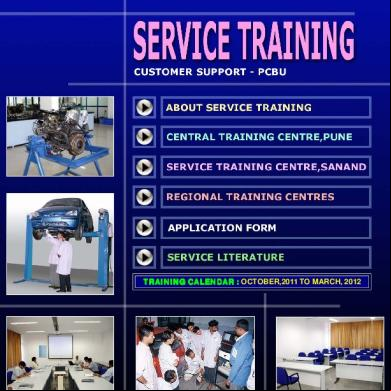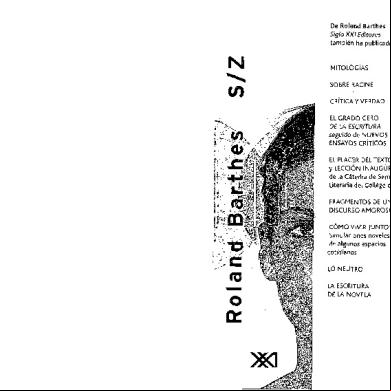Civic Welfare Training Service 1s5v62
This document was ed by and they confirmed that they have the permission to share it. If you are author or own the copyright of this book, please report to us by using this report form. Report 2z6p3t
Overview 5o1f4z
& View Civic Welfare Training Service as PDF for free.
More details 6z3438
- Words: 1,423
- Pages: 5
Civic Welfare Training Service (CWTS) – refers to the Program component or activities contributory to the general welfare and the betterment of life for the of the community or the enhancement of its facilities, especially those devoted to improving health, education, environment, entrepreneurship, safety, recreation and moral of the citizenry and other social welfare services. We, the faculty of the National Service Training Program - Civic Welfare Training Service (NSTP-CWTS) who have diverse backgrounds and various fields of specialization, are called to commit ourselves in developing students-community development workers that shall serve as active partners of the institution, of the community, and of the nation in the implementation of different community development programs, projects and activities, contributory to nation-building and achievement of social transformation focusing on the national security, development and/or welfare in accordance to the Lasallian Guiding Principle of Faith, Zeal and Communion; by utilizing a theory-practicum approach, through classroom lectures and discussions, both structural and dynamic learning activities, community exposures, application of the knowledge, skills and attitudes in responding to real-life problems of the community and through establishing networks and linkages within and outside the institution in coordination with the Lasallian Community Development Center (LCDC). NSTP-CWTS 101 (Lecture) is a program designed to enhance the civic consciousness of students by developing the value of service and commitment for the welfare and betterment of life of all of the community. It also aims to strengthen the students’ active participation in the program and activities intended to uplift the different dimensions of development in accordance to the Lasallian Values of Religion, Mores at Culture. NSTP-CWTS 102 (Practicum) is intended for intensive community exposure for thorough implementation of community plans and projects which will develop the student’s value of commitment, hardwork and resourcefulness. The different programs under NSTP-CWTS: Health Program - Blood Donation and Registry - Herbal Medicine - Cancer Care - Communicable Diseases - Basic First Aid - Disaster Management
Education Program - School-based Program - Community-based Program Livelihood Program - Skills Training - Entrepreneurial Program Pastoral Program - Family Ministry - Parish Pastoral - Day Care Value Formation - Pastoral Advocacy - Elderly Accompaniment Self-Governance - Environmental Program - Child Abuse Center-based - Children Advocacy Community-based - Street Children - Political Education The goal of the law and of the program is to harness the strength and capacity of the youth to contribute to nation-building, thus the National Service Reserve Force was created to enlist CWTS and LTS graduates which is also equivalent to the Citizen Armed Force of the ROTC. In the event that the state will need people for its civic and literacy activities, it will merely utilize the personnel of the reserve force, the student volunteers the NSTP-CWTS and the NSTP-LTS has produced. As with the need of the Armed Forces for additional force for its defense campaigns, it can easily use its body of reservists in the Reserve Command.
Contribution of students to our society Student period is the formative period in one’s life. A student must develop all such qualities in him during this period as enable him to lead a successful life. All activities are good if one remains within reasonable limits. Students should therefore, pay attention to their studies. In India, education signified knowledge of the self. Education meant character building and drawing out the best in each individual. Education and learning has always been everything to do with life and living. Education enabled the student to realize within himself the strength and freedom to take control of his life without fear. The aim of such education was to bring out the best abilities in every individual, family, community and the society, in offer for the service of the land and the people. When students have been treated with respect, they have lived up to it and displayed a strong sense of responsibility. On being recognized as individuals, they have displayed a readiness to work for change within the existing system rather than by dropping out of it. For all round development of a student, it is essential that ways for partaking in extracurricular activities be available. It is in this view that extracurricular activities conducted regularly to enable students to discover and hone their skills in fields that are not academic in nature. Technical activities are also held on a regular basis to promote excellence in technical skills among the student body. These activities are completely organized by the student community. Education is an integrated enterprise. Unfortunately the society at large as well as the government looks at it in a segmented way _ Elementary education, secondary education, Higher education, general education, technical education, vocational education etc. First role is to provide education for those who fall within its direct fold. The second role is to guide the functionaries and planners of those. From the day we were all born we watched and observed everything on front of us. We watched our family, classmates, television, Internet and everybody around us. Role models have a great affect in our society. A role model must have the ability to show leadership, planned out ideas, and able to make a difference in the society. Role models have a dramatic affect on future generation of young minds. The influences of a role models have on young people are great. The most important part of being a role model is to be positive and responsible show good moral standing because young people are relying on role models today. A role model must possess the ability to show leadership. Role models showing leadership will greatly influence young people’s mind by showing them positive things. For example role models in school like the upperclassmen will show leadership to their fellow underclassmen by leading them to the right decisions to showing them strategy to accomplish their goal of succeeding in school or they could lead them to be the future role models for the
next generation of students. In other words role models that show leadership will lead to positive influence. Another similar example of how role models show leadership is teachers. Teachers teach students to become productive in their studies by teaching students what they have learned in the past. When teachers teach students about their own knowledge the help students become better and smarter. In other words teachers show leadership by teaching students the information they have learned and this leads to positive influence. A role model must possess an ability to plan out ideas. Role models that plan out ideas are able to show young people the importance of being able to think and understand. For example parents are great at showing the ability to plan out ideas by planning ahead for their children future. Young people are often viewed as lacking the skills needed to become part of the political process. These perceptions are often backed by popular theories on childhood development and adolescence, many of which define youth as social group that is in the ‘stage of becoming adults”. “Young people are the last group we are allowed to systematically exclude.” young people are not afforded the opportunities to share power with adults in part because they are viewed as lacking the requisite skills. Consequently, they are not invited to the table. The very idea of “youth citizenship” – young people participating as equals – is a stretch for many adults. The irony is, however, that once at the table, young people are often viewed as a threat to adult power. Rather than work with young people to build the skills, adults either abdicate power or work to control it. This tendency to exclude young people has been wellsubstantiated in international Therefore ‘youthfulness’ has become a major justification for excluding young people from decision making. It is also important to emphasize that these ideas are also present all major social institutions; from the family, the school, the community; religious institutions etc. It is not a surprise that there are not expectations and processes that facilitate the political participation of young people within their communities as well as at the national level. One of the more frequently used justifications excluding young people is the entrenched myth of youth apathy - young people are frequently portrayed as lacking motivation to become involved. This myth is captured most aptly in the media hype about Generation X syndrome which describes young people as a socially inert, self-absorbed group with little or no interest in the political process.
FINAL PAPER IN CWTS
Regine S. Omadto SW12
Mr. Gerald Antonio
Education Program - School-based Program - Community-based Program Livelihood Program - Skills Training - Entrepreneurial Program Pastoral Program - Family Ministry - Parish Pastoral - Day Care Value Formation - Pastoral Advocacy - Elderly Accompaniment Self-Governance - Environmental Program - Child Abuse Center-based - Children Advocacy Community-based - Street Children - Political Education The goal of the law and of the program is to harness the strength and capacity of the youth to contribute to nation-building, thus the National Service Reserve Force was created to enlist CWTS and LTS graduates which is also equivalent to the Citizen Armed Force of the ROTC. In the event that the state will need people for its civic and literacy activities, it will merely utilize the personnel of the reserve force, the student volunteers the NSTP-CWTS and the NSTP-LTS has produced. As with the need of the Armed Forces for additional force for its defense campaigns, it can easily use its body of reservists in the Reserve Command.
Contribution of students to our society Student period is the formative period in one’s life. A student must develop all such qualities in him during this period as enable him to lead a successful life. All activities are good if one remains within reasonable limits. Students should therefore, pay attention to their studies. In India, education signified knowledge of the self. Education meant character building and drawing out the best in each individual. Education and learning has always been everything to do with life and living. Education enabled the student to realize within himself the strength and freedom to take control of his life without fear. The aim of such education was to bring out the best abilities in every individual, family, community and the society, in offer for the service of the land and the people. When students have been treated with respect, they have lived up to it and displayed a strong sense of responsibility. On being recognized as individuals, they have displayed a readiness to work for change within the existing system rather than by dropping out of it. For all round development of a student, it is essential that ways for partaking in extracurricular activities be available. It is in this view that extracurricular activities conducted regularly to enable students to discover and hone their skills in fields that are not academic in nature. Technical activities are also held on a regular basis to promote excellence in technical skills among the student body. These activities are completely organized by the student community. Education is an integrated enterprise. Unfortunately the society at large as well as the government looks at it in a segmented way _ Elementary education, secondary education, Higher education, general education, technical education, vocational education etc. First role is to provide education for those who fall within its direct fold. The second role is to guide the functionaries and planners of those. From the day we were all born we watched and observed everything on front of us. We watched our family, classmates, television, Internet and everybody around us. Role models have a great affect in our society. A role model must have the ability to show leadership, planned out ideas, and able to make a difference in the society. Role models have a dramatic affect on future generation of young minds. The influences of a role models have on young people are great. The most important part of being a role model is to be positive and responsible show good moral standing because young people are relying on role models today. A role model must possess the ability to show leadership. Role models showing leadership will greatly influence young people’s mind by showing them positive things. For example role models in school like the upperclassmen will show leadership to their fellow underclassmen by leading them to the right decisions to showing them strategy to accomplish their goal of succeeding in school or they could lead them to be the future role models for the
next generation of students. In other words role models that show leadership will lead to positive influence. Another similar example of how role models show leadership is teachers. Teachers teach students to become productive in their studies by teaching students what they have learned in the past. When teachers teach students about their own knowledge the help students become better and smarter. In other words teachers show leadership by teaching students the information they have learned and this leads to positive influence. A role model must possess an ability to plan out ideas. Role models that plan out ideas are able to show young people the importance of being able to think and understand. For example parents are great at showing the ability to plan out ideas by planning ahead for their children future. Young people are often viewed as lacking the skills needed to become part of the political process. These perceptions are often backed by popular theories on childhood development and adolescence, many of which define youth as social group that is in the ‘stage of becoming adults”. “Young people are the last group we are allowed to systematically exclude.” young people are not afforded the opportunities to share power with adults in part because they are viewed as lacking the requisite skills. Consequently, they are not invited to the table. The very idea of “youth citizenship” – young people participating as equals – is a stretch for many adults. The irony is, however, that once at the table, young people are often viewed as a threat to adult power. Rather than work with young people to build the skills, adults either abdicate power or work to control it. This tendency to exclude young people has been wellsubstantiated in international Therefore ‘youthfulness’ has become a major justification for excluding young people from decision making. It is also important to emphasize that these ideas are also present all major social institutions; from the family, the school, the community; religious institutions etc. It is not a surprise that there are not expectations and processes that facilitate the political participation of young people within their communities as well as at the national level. One of the more frequently used justifications excluding young people is the entrenched myth of youth apathy - young people are frequently portrayed as lacking motivation to become involved. This myth is captured most aptly in the media hype about Generation X syndrome which describes young people as a socially inert, self-absorbed group with little or no interest in the political process.
FINAL PAPER IN CWTS
Regine S. Omadto SW12
Mr. Gerald Antonio










